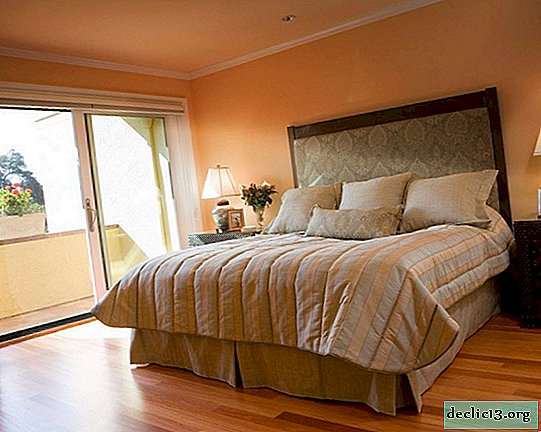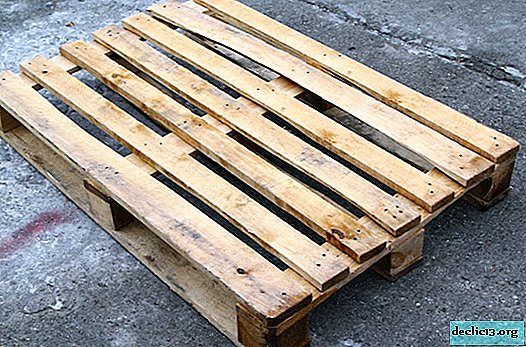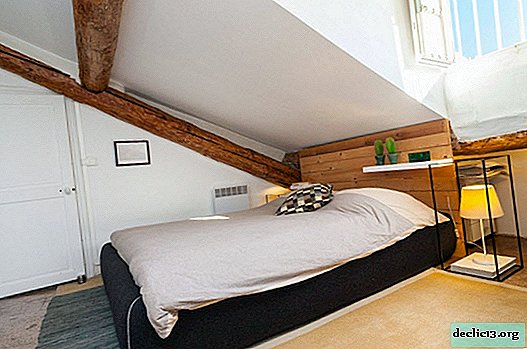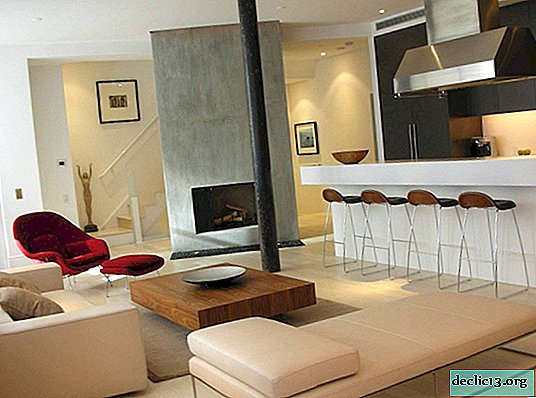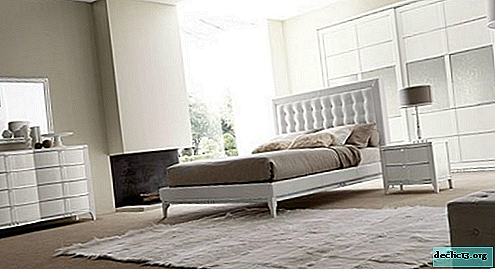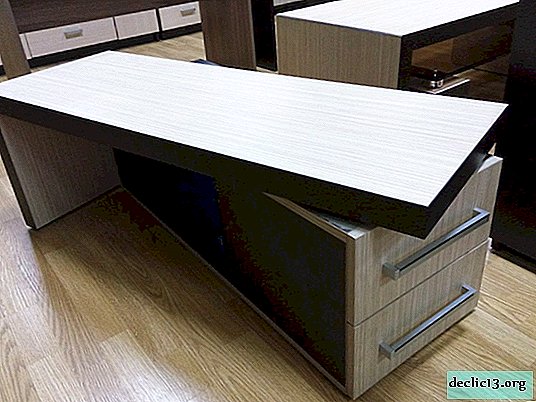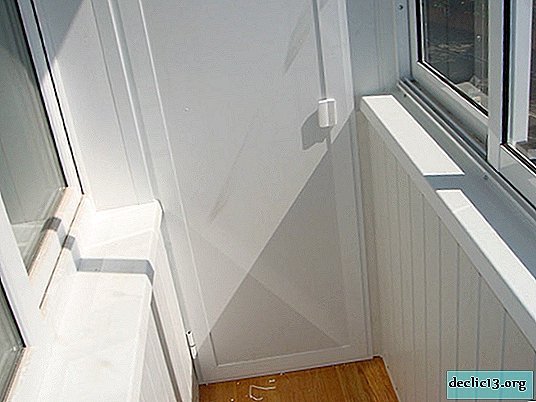Small bathroom design: tiled
Repair in the bathroom is associated with solving many problems of many of our compatriots. The main obstacle to achieving the desired result, translating into reality their fantasies and ideas about beautiful design, is the small area of the room for water procedures. Most of the standard apartments in our country cannot boast of impressive proportions. As a result, the owners have to calculate every square centimeter of the bathroom area in order to ergonomically arrange all the necessary plumbing, accessories and storage systems. At the same time, everyone wants to get a beautiful, modern and durable design that would please their household for many years with their appearance. The main role in creating a practical and attractive interior is played by the surface finish of the room. This publication will be devoted, perhaps, to the most popular type of design of the planes of the bathroom - facing ceramic tiles.
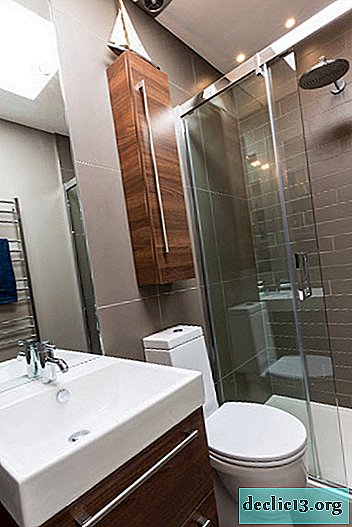

Tile finish - advantages and disadvantages
Many of us choose tile as a decoration material for the bathroom rather by inertia, and not after a thorough analysis of all the methods available on the modern market for decorating surfaces in a room with high humidity. Let's look at the benefits of this type of finish over other options together:
- It is difficult to find a material that has greater moisture resistance than ceramic tiles or mosaics. You can be absolutely calm about protecting your walls and floor from constant exposure to moisture;
- High resistance to moisture entails another important advantage - resistance to the formation of fungus and the growth of bacteria. High hygiene of the material provides not only safe use, but also saves owners time on cleaning surfaces;
- Ceramic tile has a sufficiently high strength - if you do not throw heavy and sharp objects from a high height on floors lined with ceramics, then there simply will not be other options for harming the surface;
- The durability of the cladding is one of the most important advantages, pushing the owners of apartments and private houses in an expensive way. If the installation of the tile was carried out without disruption and the owners treated the surfaces quite accurately, then repairing the bathroom can be safely bequeathed to the younger generation;
- Simplicity in operation and cleaning is what attracts the majority of housewives in decorating the bathroom with ceramic tiles. Periodic cleaning of surfaces with a damp sponge and the infrequent use of detergents - that's all that is required to maintain cleanliness in the room for water procedures, tiled;
- The ability to maintain a pristine appearance for a long time - the tile does not fade from sunlight, does not change its aesthetic qualities from constant exposure to moisture, and even after the use of chemical cleaners;
- Ceramics is presented in a wide range of colors and textures, the material is available in various versions. The abundance of options for shapes and sizes allows you to meet the needs of all owners of apartments and houses planning to repair bathrooms;
- Using ceramic tiles, you can design a bathroom of any shape and size, in any stylistic direction.


Another advantage of decorating a bathroom with tiles compared to wall panels is the fact that it does not need to create a frame for installation. And for rooms of small area, when every centimeter of the surface counts, this fact is an important argument. But the surface before laying the tiles must be leveled in any case.


But, like any finishing material, tile has its drawbacks. In fairness, it must be said that they are not able to outweigh the many advantages:
- Decorating a bathroom with tiles is not the cheapest pleasure. Tiles will cost more than painting walls or lining with moisture resistant panels;
- The cost of installing ceramic tiles is also expensive. After all, it is better to invest in a specialist once with good recommendations, so as not to think about repairing the bathroom for a long time;
- The tile itself is highly resistant to moisture, but its weak point is the inter-tile seams. The more such seams (i.e., the smaller the size of the products themselves), the more reasons the owners have for troubles. Over time, the space between the products may darken and even become moldy. Grout must be refreshed and use antiseptics that prevent the formation and spread of fungus.



Color palette for a small bathroom
Light tile is the first thing that comes to mind when choosing an image for a modest bathroom. And this is not surprising - light shades will create not only a light, laid-back atmosphere, but also visually increase a small space. But choosing a bright and even snow-white palette for decorating a bathroom, you need to be careful. Excessive use of white color, and even with a tiled finish, can turn a bathroom into a sterile operating room. A small space will seem higher if dark tones are used to finish the floor and its lower part.



If you decide to use exclusively light tiles for finishing both walls and floors, you need to create a color accent with the help of decor, lighting fixtures or other interior elements. Bright towels, a rug on the floor or storage systems under the sink, made in a colorful manner will be an excellent reason to focus your eyes.

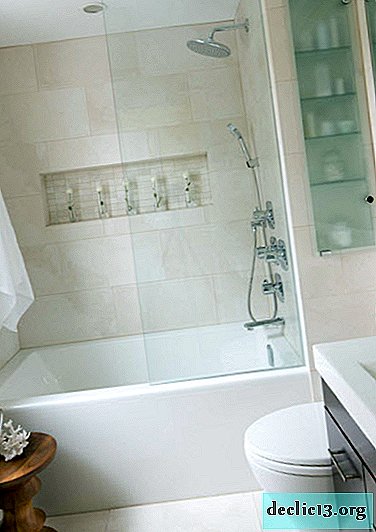



Marble tiles will help to preserve the light image of the room, without making it sterile clean and similar to a hospital room. Even a small room can add sophistication through the use of imitation under a noble stone.







Various shades of gray are very popular in modern bathroom design projects. This neutral color becomes the perfect backdrop for snow-white plumbing and shiny accessories for it. Using combinations of various shades and tiles of different sizes allows you to create interesting interiors in which everyone will be comfortable and calm.






The contrasting interior is always relevant. The dosed use of dark shades against a light finish allows you to create a dynamic, well-structured interior that does not seem boring to anyone. Even in a small bathroom, you can use the game of contrasts, using a dark tone as a border, a pattern on an accent surface or a flooring ornament.





For those who are not happy with the light palette for decorating the bathroom, there is a way out. In modest spaces, it is more difficult to combine colors, especially bright ones, but this is possible if one of the tones becomes white. You can create an accent wall, or an entire sector. For example, lay out with bright tiles only the shower area or apron over the sink. The colorful tiles with beautiful ornaments can be used for cladding floors, and light, neutral products should be left on the walls.





Tile options in shape and size
In Soviet times, we all could observe in the bathrooms of our friends about the same finish. Not only because the bathrooms were of standard sizes, but the material itself was exclusively square in shape with dimensions of 20x20 cm. Nowadays, the tile market is represented by such a wide selection of tiles of various shapes and sizes that everyone can find their own version. Speaking conditionally, then all ceramic tiles can be divided into mosaic, small, medium and large.



For mosaic tiles, the sizes of elements range from 1x1 to 5x5 cm. As a rule, mosaics are used for combination with larger tiles. The advantage of the mosaic is that it can be used to veneer complex areas and shapes - niches and arches, rounded surfaces. It is also convenient to use a small mosaic for the edging of various interior elements. But it’s not advisable to use even a large mosaic for facing all the planes of the bathroom - there are too many tile joints that will have to be taken care of. This technique is used in exceptional cases - if the walls of the room themselves are made in round shapes.








The sizes of small standard tiles are in the range from 6x6 to 20x20 cm. There are a lot of variations in this size sector - 10x10, 13x13, 15x15 cm. The average sizes of ceramic tiles are in the range from 20x20 to 30x30 cm. There are also non-standard versions of products with sizes 10x20, 15x25, 20x25 cm.




A large tile in a standard square shape has sizes from 30x30 to 40x40 cm. Rectangular products can have sizes 30x60, 33x45. Of course, manufacturers of finishing materials can also order large tiles, but such products are rarely found in stores, because they are not in demand among buyers.




Of course, the installation of large tiles is faster, but for bathrooms it is better to purchase medium-sized products. In addition to the fact that a medium-sized tile will look more organically in a modest-sized room, you can minimize the amount of waste that is inevitable when cutting tiles to contours of surfaces.


To create a reliable, durable and durable flooring, it is best to use porcelain stoneware - it is a material reinforced with the smallest particles of quartz that can withstand heavy loads. In rare cases, this material is also used for wall cladding, but is most often used as a floor covering. Porcelain tile can be glazed and not glazed.

Non-glazed porcelain stoneware has a sufficiently porous, rough surface that perfectly prevents slipping. Externally, such products can resemble masonry and, as a rule, are presented in plain colors.


Due to the use of glaze, porcelain stoneware products become smoother and therefore come with textured surfaces. Even a slight deviation from smoothness allows you to create a material for flooring, which will be safe for humans. The use of glaze allows you to not be limited in choosing a color palette and even applying drawings, ornaments.

Modern bathrooms often use porcelain stoneware imitating a wooden floorboard or parquet. The notes of natural warmth brought by imitation of wood pattern into a snow-white and rather cool room in terms of color temperature turn out to be very helpful.




